Kyunghun Kim
Selective Focusing Learning in Conditional GANs
Jul 08, 2021
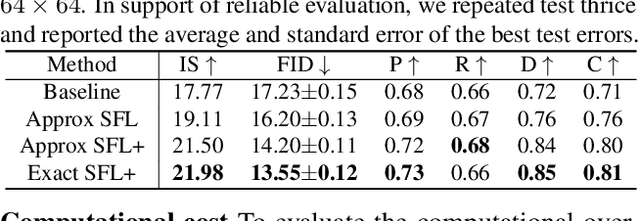
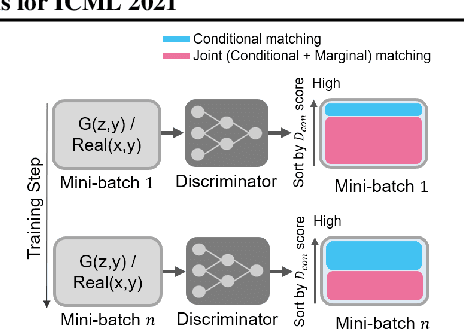

Abstract:Conditional generative adversarial networks (cGANs) have demonstrated remarkable success due to their class-wise controllability and superior quality for complex generation tasks. Typical cGANs solve the joint distribution matching problem by decomposing two easier sub-problems: marginal matching and conditional matching. From our toy experiments, we found that it is the best to apply only conditional matching to certain samples due to the content-aware optimization of the discriminator. This paper proposes a simple (a few lines of code) but effective training methodology, selective focusing learning, which enforces the discriminator and generator to learn easy samples of each class rapidly while maintaining diversity. Our key idea is to selectively apply conditional and joint matching for the data in each mini-batch. We conducted experiments on recent cGAN variants in ImageNet (64x64 and 128x128), CIFAR-10, and CIFAR-100 datasets, and improved the performance significantly (up to 35.18% in terms of FID) without sacrificing diversity.
Painting Outside as Inside: Edge Guided Image Outpainting via Bidirectional Rearrangement with Step-By-Step Learning
Oct 05, 2020
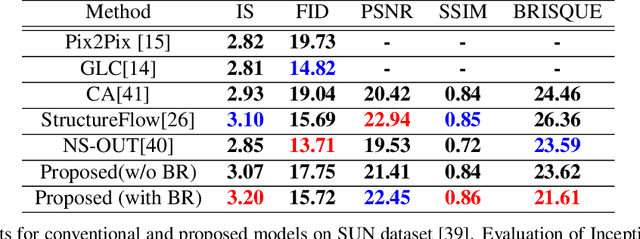
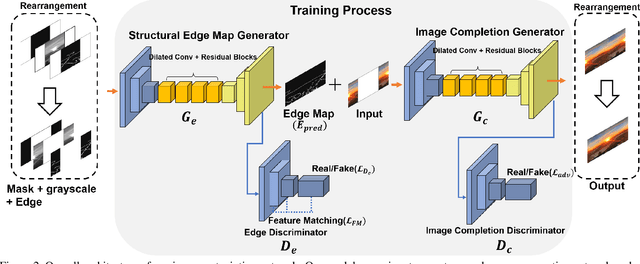
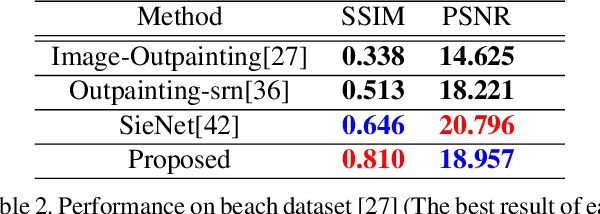
Abstract:Image outpainting is a very intriguing problem as the outside of a given image can be continuously filled by considering as the context of the image. This task has two main challenges. The first is to maintain the spatial consistency in contents of generated regions and the original input. The second is to generate a high-quality large image with a small amount of adjacent information. Conventional image outpainting methods generate inconsistent, blurry, and repeated pixels. To alleviate the difficulty of an outpainting problem, we propose a novel image outpainting method using bidirectional boundary region rearrangement. We rearrange the image to benefit from the image inpainting task by reflecting more directional information. The bidirectional boundary region rearrangement enables the generation of the missing region using bidirectional information similar to that of the image inpainting task, thereby generating the higher quality than the conventional methods using unidirectional information. Moreover, we use the edge map generator that considers images as original input with structural information and hallucinates the edges of unknown regions to generate the image. Our proposed method is compared with other state-of-the-art outpainting and inpainting methods both qualitatively and quantitatively. We further compared and evaluated them using BRISQUE, one of the No-Reference image quality assessment (IQA) metrics, to evaluate the naturalness of the output. The experimental results demonstrate that our method outperforms other methods and generates new images with 360{\deg}panoramic characteristics.
 Add to Chrome
Add to Chrome Add to Firefox
Add to Firefox Add to Edge
Add to Edge